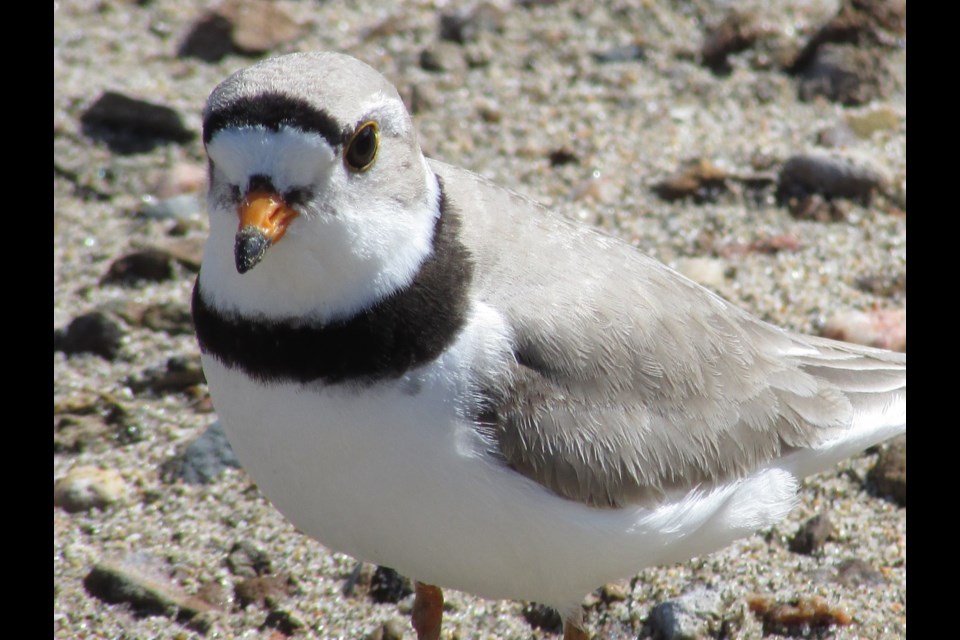REGINA – School is out and it's time to hit the beach. As families head out to our province's beautiful shorelines for some R and R, they should be on the lookout, as this is also the time when the endangered Piping Plover will be hitting the beaches for a different reason, to nest.
Piping Plovers, listed as endangered since 1985, are masters of camouflage and nest directly on the shoreline; above the waterline and below the vegetation growth. Saskatchewan boasts the largest remaining breeding population in the world each summer on our beaches. Because they prefer sandy open beaches, Piping Plovers are often threatened by human activity, since we too favour these types of shorelines in our recreation.
“Since the Plovers nest on the ground and mostly rely on not 小蓝视频 seen, activities like ATV traffic and loose dogs on beaches are a risk to them,” Emily Putz, co-ordinator for Nature Saskatchewan’s Plovers on Shore program explains.
“Limiting these kind of activities on beaches where they are known to nest can go a long way.”
In June, Piping Plover females will lay four eggs in a shallow scrape in the sand lined with pebbles. Over the next 28 days, both parents will incubate and fiercely defend their nest.
“They make fantastic parents,” says Putz, “especially the males who stick around a bit longer in late summer with the fledglings. During the breeding season, they will both defend the nest, leading predators away with broken wing displays or false scrape incubation.”
Peak hatching occurs in mid-June to early July, and the babies are up and moving within the day.
“It’s just 小蓝视频 mindful that we are sharing these spaces with these small creatures that can use our help,” further explains Putz, “something as insignificant as a deep footprint to us can mean life or death if a small chick falls and is trapped in it.”
Adult Plovers look very similar to the common Killdeer, with sandy grey backs, white bellies and orange bills and feet. Where they differ is in their face markings, Piping Plovers will have a black headband marking and one black neckband marking, as opposed to the Killdeer’s two neck bands. If you think you’ve seen a Piping Plover, please report your sightings to Plovers on Shore through Nature Saskatchewan’s toll-free hoot-line, 1-800-667-HOOT (4668). All caller information is kept private and every sighting goes towards helping learn more about these Endangered shorebirds.
Nature Saskatchewan, in partnership with the Canadian Wildlife Service, also just completed the 2024 Prairie Piping Plover Census across the province. The survey window closed on June 16th and the data is pouring in. We are excited to see how the Piping Plovers are faring and would like to extend a big thank you to our many partners and volunteers who contributed time and effort to make this census possible, as well as landholders who gave access permission to their shoreline during the survey window.
If you have any questions about the Plovers on Shore program or would like to learn more about this species, please contact Emily Putz at 306-780-9832 or [email protected].




